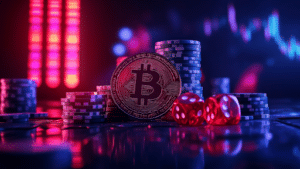
Over time, the Central Bank of the United States of America (Federal Reserve) has changed its organizational system towards a greater ability to make decisions quickly and effectively
To date, the Federal Reserve (Fed) consists of the Board of Governors located in Washington and 12 other institutions of a regional nature that are almost entirely autonomous, together cooperating to safeguard the health of the US economy and its development.
According to Esther George, of the Kansas City Fed nearing retirement, the Fed is finally an enduring and credible public institution.
In remarks prepared for the Exchequer Club in Washington, DC, George said:
“Meeting rooms … where a union leader and a manufacturer; a banker and a nonprofit executive; a tribal leader and an energy CEO, sit side by side. For a Fed policy maker, these discussions are obviously invaluable.
Not only do our directors provide fiduciary oversight and important insights into economic and financial conditions, but they create a level of engagement and understanding that might not otherwise exist.”
In the 1970s and 1980s, the US central bank did not have this fluidity at the decision-making level, let alone succeed as effectively.
“it is hard to imagine a scenario in which a more politically controlled central bank would have been willing to take the very difficult and painful steps that ultimately proved necessary to restore economic and price stability to the nation”
Today, skyrocketing inflation is putting Jerome Powell and the Fed face to face with their responsibilities, and thanks to aggressive monetary policy, inflation is gradually coming down.
The success of the Federal Reserve’s policies was also confirmed by last week’s recent CPI data.
“Today, the US is once again experiencing high inflation and the Federal Reserve is aggressively tightening monetary policy. And, once again, the benefits of central bank independence are clear.”
Not only is inflation a mortal danger to the US economy but another major bogeyman has been growing silent for decades, the national debt.
American households, unlike for example those in Italy or Japan, have the highest private debt, and the state is no different.
Among the plans on the table to remedy the state deficit is the issuance of a trillion-dollar currency but not by the Federal Reserve but by the US Treasury.
According to Nobel laureate Paul Krugman, if the currency is issued it would be “the most important tax reform of our time.”
In essence, to raise the deficit ceiling so that higher government debt would be tolerable, Congress would have to give the Treasury authorization to create the $1 trillion platinum coin.
Another avenue would be to change the laws so that it would no longer be possible to create such a large amount of deficit but this would limit the country’s monetary policies too much.
Even though it is the Fed that has the ability to print currency, by a particular law this ability is also given to the US Treasury at the discretion of the Secretary of State (Janet Yellen).
Following the printing of such currency, all that would be needed would be to deposit it with the Federal Reserve and the public debt ceiling would again be capacious.
Through its Board, the Federal Reserve is also paying attention to future scenarios and to this end has established a climate scenario analysis committee involving the country’s six largest banks.
The banks involved in the research team include Bank of America, Citigroup, Goldman Sachs, JPMorgan Chase, Morgan Stanley and Wells Fargo.
The committee will have to assess and indicate the economic and financial risks related to climate change.
The review will go through an analysis on current policies and one on economic consequences in a zero-impact world.
The scenarios will be based on those provided by the Network of Central Banks and Supervisors for Greening the Financial System (NGFS).
The risks facing the US economy are physical and transitional.
In the former case, there will be the impact on banks’ real estate portfolios of possible financial shocks due to damage to citizens and properties from external weather events such as hurricanes, fires and floods, rising temperatures and sea levels.
As for transition risk, on the other hand, it will be tested how business credit and the reaction of commercial real estate portfolios will be affected in the transition to a green economy, while also assessing the change in policy choices in the orientation of consumption and business.
The Federal Reserve is not the only central bank in the world to conduct such research by establishing an ad hoc committee.
The Central Bank of the United Kingdom and the European Union, through the tool of stress testing check the resilience and flexibility of their banking system so as to better cope with climate-related risks.
During a recent speech in Sweden, Fed Chairman Jerome Powell distanced himself from the theory that sees the US central bank as the “climate policymaker.”
Michael Barr, Fed Vice President for Supervision stated the following:
“The Fed has limited but important responsibilities regarding climate-related financial risks: ensuring that banks understand and manage their material risks, including financial risks related to climate change. The exercise we are launching today will advance the ability of supervisors and banks to analyze and manage emerging climate-related financial risks.”

















